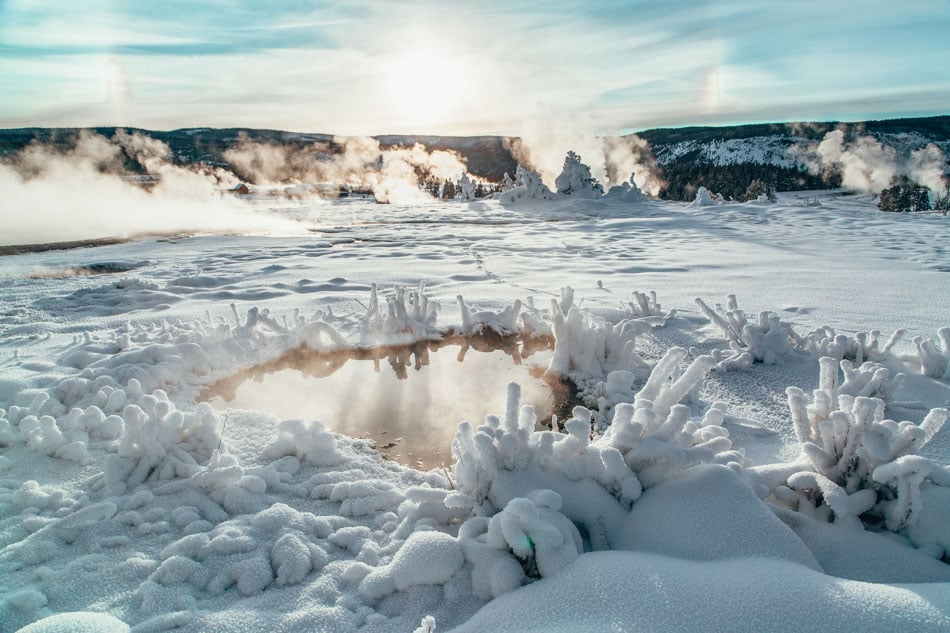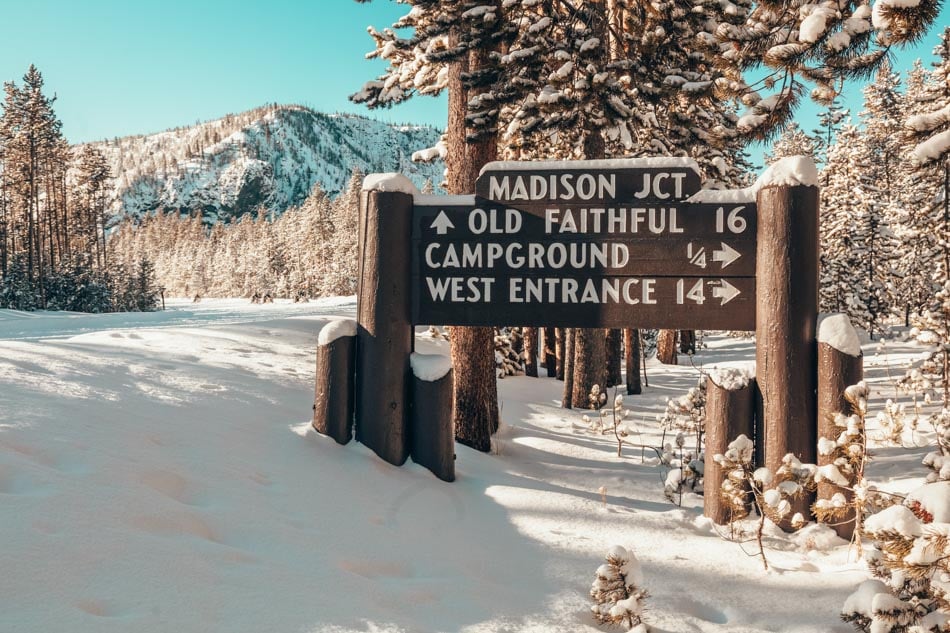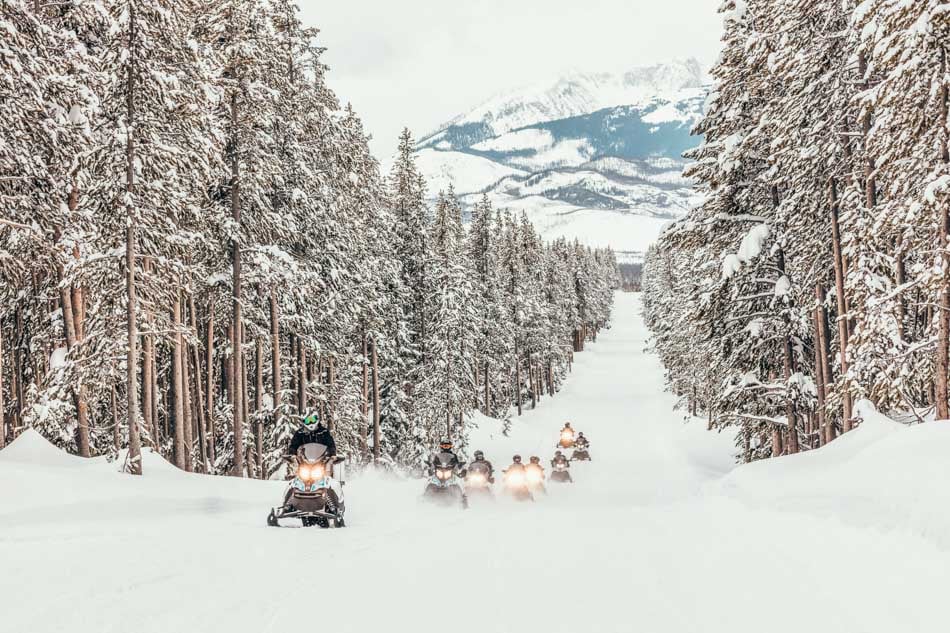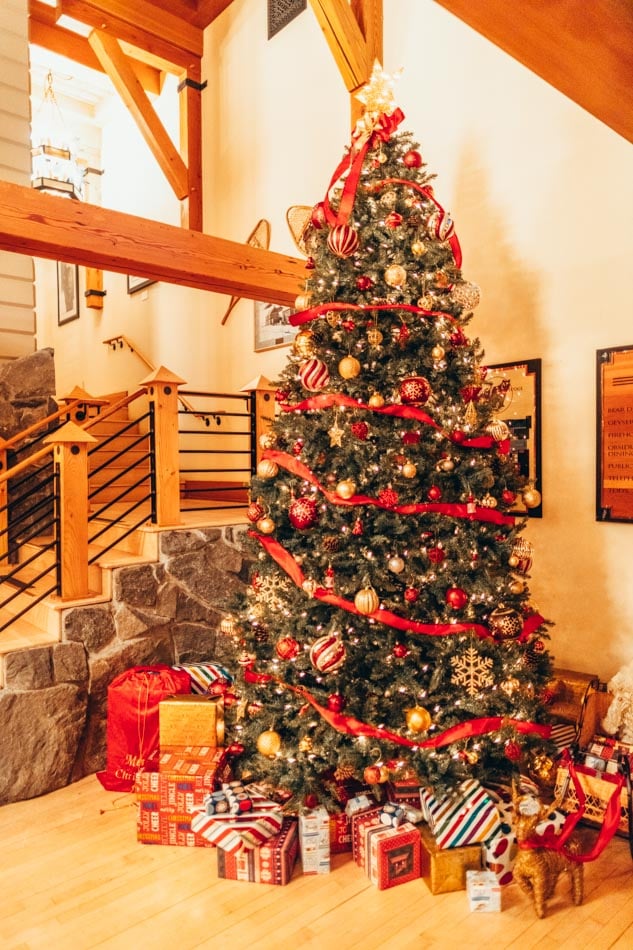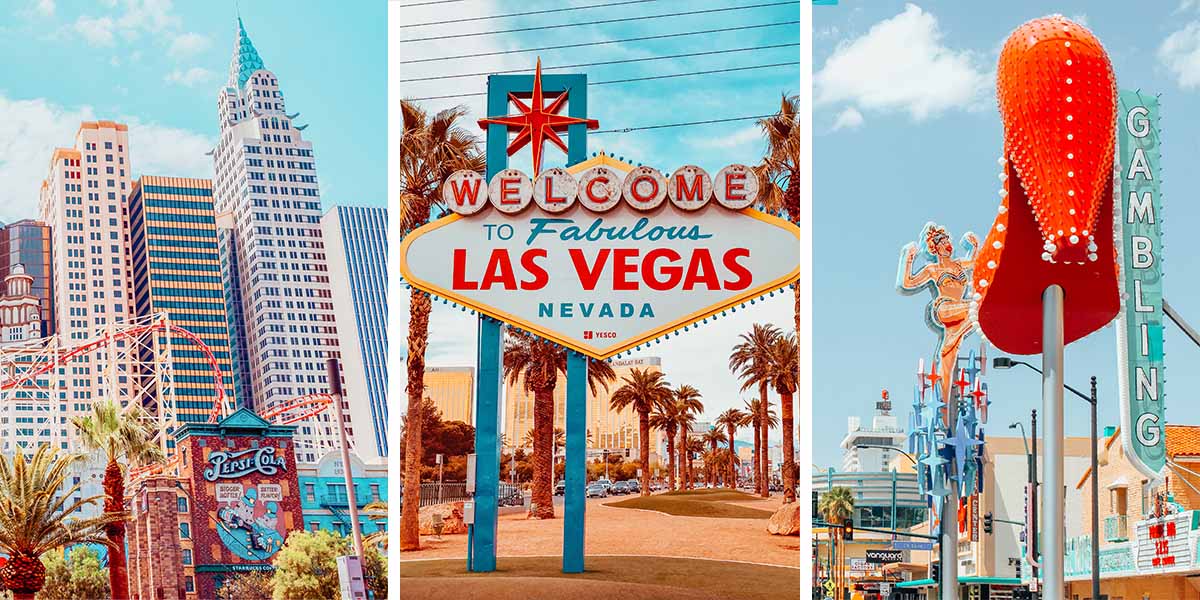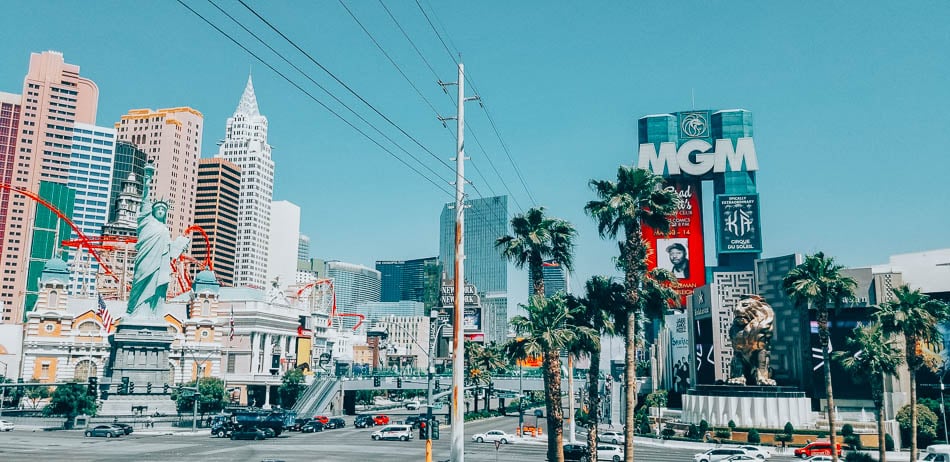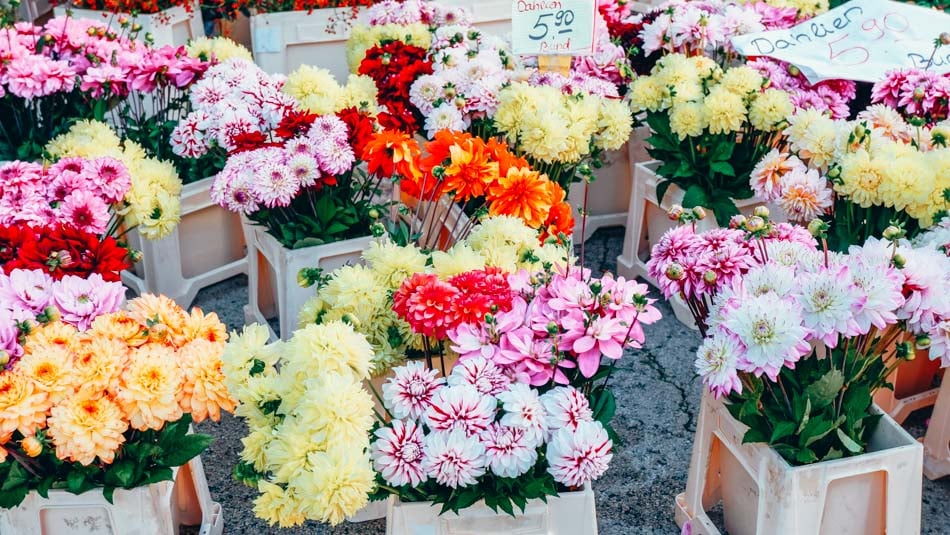The 6 Best Travel Ukuleles: Lightweight, Compact, & Weather-Resistant
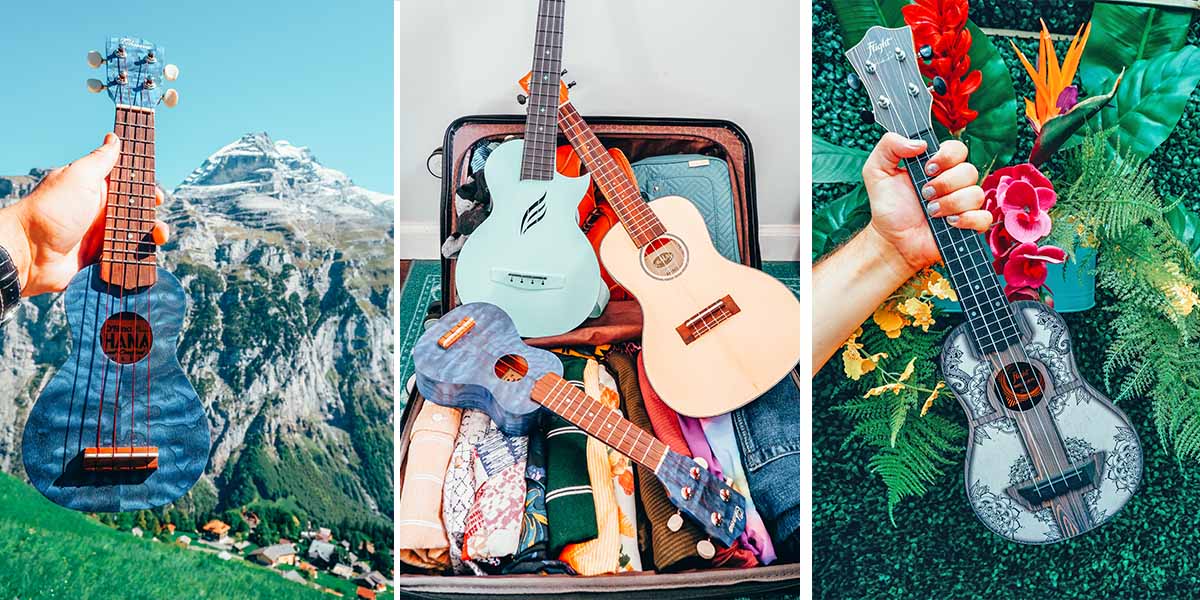
Sometimes the best travel companion is an instrument, one that is small, pleasant, and perfectly portable – like the ukulele! While it makes sense that a ukulele is a perfect travel buddy based on size, ukuleles specifically designed for travel are very much a thing. Travel ukeleles are designed to be either light-weight, compact, weather-resistant, or all three!
When Practical Wanderlust’s Editor-in-Chief, Richie, asked if he could write an article on travel ukuleles, I actually didn’t realize that travel ukuleles existed. Everything I knew about them came from trips to Hawai’i and friends and family members who had picked up the instrument at some point or another (my mom, sister, and husband all play the ukulele, so I’m truly surrounded by a chorus of tiny ukes at all times).
So, in the spirit of trying and testing travel gear, our intrepid Editor spent months traveling with various ukuleles and making detailed notes on their sound and performance. If you’re in the market for a lightweight, travel-friendly instrument companion, in this post you’ll find absolutely everything you need to make a decision! Take it away, Richie.
Psst: Planning a trip and need some other travel essentials? Check out these posts:
Psst: Need some help packing for your next adventure? We’ve created 5 FREE Printable Packing Lists with everything you need to plan your next trip. We’ll also send our favorite travel tips straight to your inbox! Just sign up below.

How I Evaluated My Travel Ukuleles
Playing an instrument is something that I always wanted to do, but never thought I could realistically learn. I went to a performing arts high school (as a theatre major) and was surrounded by insanely talented musical people, so I thought, “why even try?”.
Cut to ten years later when I bought my first ukulele. I learned some chords, slowly learned how to strum and play some Lana Del Rey songs, annnnd eventually put the uke down and forgot about it.
Cut once again to March 2020, the world shuts down and I’m stuck at home. I picked up the ukulele again, this time really diving in, and started playing music obsessively from The Daily Ukulele: 365 Songs for Better Living (which I believe is a must-have for beginning players). Since then I’ve been playing the ukulele every day and writing my own songs, and I can’t imagine not taking my ukulele everywhere I go.
Luckily, I’ve field-tested many ukuleles from four brands that make specific travel ukuleles. While the little Hawai’ian instrument (by way of Portugal) is generally compact enough for travel, I have field-tested several ukuleles that are designed to be your perfect travel buddy.
I field-tested my ukuleles by traveling with them to new cities, taken them hiking, kayaking, and to the beach, playing them in the car, and just generally taking them out and about (out and about may include my bathtub, but who’s judging?). One tiny ukulele even took a big trip with me abroad to Switzerland!
In my search for the best travel ukuleles, I was seeking to find ones that fit certain criteria:
✔ I need them to withstand a normal amount of wear and tear. I should specify that I didn’t throw any of these ukuleles off a cliff, put them in the dryer, or take them 20,000 leagues under the sea. I followed general maintenance guidelines and tried not to drop them. Mostly.
✔ I need them to be well made and sound good. There’s no real benefit of getting a travel ukulele if you don’t enjoy the sound you get from it!
✔ I need them to be lightweight and easy to transport, so that I can carry them or take them in a car or airplane without taking up a ton of space or adding a ton of weight.
✔ I need my ukulele to look cool, because even if your brother tells you that a ukulele is a dorky instrument, there ARE cool looking ukuleles (and I mean, playing ukulele is cool).
- A note about ukulele sizes: Ukuleles come in three main sizes – soprano, concert and tenor (smallest to largest). Sopranos are the most common, and what we think of when we think of the common Hawaiian ukulele. Choosing a size really comes down to personal preference, though for traveling purposes, sopranos by nature are most portable. The concert and tenor models included in this post are slimline models, meaning their bodies aren’t as thick to accommodate travel.
The Best Travel Ukuleles
Below are the best travel ukuleles you can find on the market today! These models all sound good, look good, and will be your best friend whether you are going to the mountains or the beach. They are designed for portability and to be your best friend on day trips, vacations, or world travels. Let’s check them out!
Best Budget-Friendly Travel Ukulele
Flight Ukuleles are some of the most popular ukuleles and for good reason: they are super durable, portable, AND are cute and sound great! The Travel Series Soprano Ukulele with a Mandala Wood design is a ukulele that I’ve thrown in my car, taken all over town, and not have to worry about getting dinged up or going easily out of tune.
Here’s why I love it:
✔ It’s mostly made of plastic, but it still sounds great.
While the body of and fretboard is made out of plastic, the soundboard is made with laminate linden wood which gives it a punchy and bright sound that you couldn’t get from a completely plastic ukulele.
While other plastic ukuleles have a hollow sound, this definitely has more of a depth that makes it sound more like a “real” ukulele.
✔ The setup is surprisingly good.
The fret action is also low, meaning the strings are easy to push down on and the intonation is good up the fretboard. The tuners also work very well, keeping it in tune consistently. Simply put, it’s easy to play!
✔ This ukulele is inexpensive, making it a great “beater” or starter ukulele.
At only around $55, this ukulele won’t break the bank. And if you do happen to break it (which would take some work- it’s sturdy!) you’re not going to kick yourself over it.
Also, since the soundboard seems to be coated with a plastic decal for the art design, it should hold up if it gets a little wet too.
✔ This ukulele comes in sooooooo many cute designs!
While mine is the beautiful mandala wood design, you will find plenty of designs like ocean waves, graffiti, galaxies, cherry blossoms, or even a more classic wood grain design. Really you can find something that fits your vibe! It also comes with a little (albeit thin) gig bag to put your ukulele in.
Best Long-Haul Travel Ukulele
This little Ohana O’Nina Willow Sopranissimo Ukulele went for the ride of its life when I brought it on a trip to Switzerland.
It lived in my day pack, so I could whip it out at opportune moments and have a Maria Von Trapp moment playing music in the Swiss Alps. Talk about the hills being alive with the sound of music!
Here’s why I’m a fan:
✔ This little gem is seriously TINY.
At only 17” long in total, not only does it fit easily in most bags but is seriously so effing cute.
It’s actually considered two sizes smaller than a regular Soprano and it easily fit in my daypack to take aboard my plane, and I wasn’t too worried about putting it in a fancy case – though I would definitely recommend putting it in a cloth bag so it doesn’t get scratched up.
When I am not traveling with it, I keep it on my desk to stare at its adorable little self.
✔ Its tiny little body gives it an adorable, classic ukulele sound.
Though it is so small, it does give an adorably punchy sound! This is partially because with ukuleles this small you have to tune it up from C to D, so the tension is tight enough for the ukulele to stay in tune (more about tuning here). This gives it a higher and even more jangly sound, for a 20s Tiny Pan Alley ukulele vibe.
This works great for me since it puts most songs in a more natural singing range for me, and the chord shapes remain the same (it just plays the song in a higher key).
Also, this tuner is great for any ukulele, but it’s the perfect size for this uke. (I’ve got more suggestions for travel-friendly ukulele accessories at the end of this post!)
✔ It comes in a bunch of super cute colors.
While my tiny ukulele is in blue, you can also choose purple, green, red, or yellow for the best fit for your personality. Hell, you can even plan outfits around this little cutie and pull it out of your bag for surprise concerts! Who am I kidding: I AM that extra.
✔ The wood is laminate, so it’s durable.
The body is also made out of willow laminate, which has a beautiful grain adding to its gorgeousness you can’t see only in photos. The laminate also means that it will hold up to the elements better. Cute and functional!
Best Sounding Travel Ukulele
The Kala Brand Solid Spruce Travel Concert ukulele is the perfect, excellent-sounding travel companion. Kala Brand is one of, if not the most, popular ukulele manufacturers, so you can expect a top-quality ukulele that’s not only functional but great sounding!
Here’s why I adore this ukulele:
✔ This ukulele sounds stellar.
Spruce is usually what guitars are made from, so you can expect this ukulele to give you a loud, resonant tone. It holds sustain like a dream, and really feels leaps and bounds above most travel ukuleles.
What makes it specifically a travel ukulele is that it has a “thinbody” design for easier travel, which is great since the ukulele is already a bit bigger at its concert size of just under 24″ long (it also comes in a 25.75″ tenor model).
But although the body is slim, it absolutely delivers the classic sound that’s associated with ukuleles.
✔ This ukulele looks great.
I know looks aren’t everything, but this ukulele gives off the aura of “I am a real instrument who deserves to be loved and worshipped.” A little cocky, isn’t he?
But seriously, the construction on this ukulele is fantastic: the spruce top and shiny mahogany back and sides give it an air of regality. You will definitely look stylish on the beach or at a campfire with this gem.
✔ It’s made of real wood.
A solid spruce top means just that: the soundboard is made out of a solid piece of wood. This means better sound and projection.
But since it is real wood, you’ll need to take extra care of it, especially when taking it to different climates. Wood expands and contracts with humidity, so be sure to keep it humidified with a little humidifier like this one in the padded gig bag the ukulele comes with (better yet, get a hard case). Water is the essence of beauty, remember?
Best Weatherproof Travel Ukulele
This super-stylish Enya Nova U Concert Ukulele is kind of like the Jetson’s version of a ukulele. With its bold colors and warm sound, this ukulele is the best of all worlds.
Here’s why I love it:
✔ You can take this uke ANYWHERE, and to any climate.
It’s constructed with a carbon fiber composite polycarbonate which means that not only is it waterproof, but it won’t expand and contract in different climates like a wooden instrument (which can damage the wood).
That means is a great ukulele to take even just to the pool, knowing that water and humidity won’t damage it (though make sure to dry the tuners if you get them wet; they are still made out of metal!).
It will also withstand the elements if you are the kind of traveler who is likely to hop on a plane from the tropics to the arctic, with different temperatures and humidities. Travel free, you little world nomad!
✔ It has a warm, dreamy sound.
Another huge bonus is the ukulele actually sounds wonderful – it may not be as punchy as spruce, but it gives a warm, mellow, dreamy tone with a long sustain – rare in a non-wooden instrument. If you’re plucking a melody with the strings it sounds especially nice.
It’s kind of the perfect sound to walk through a garden and sing to the bees, or just to play and not worry about being too loud (like in your hotel room).
✔ It has a cool, futuristic look!
The design is chef’s kiss, where do I start? Firstly, the colors are so bold and wonderful. While I have baby blue, there is also blush pink, red, orange, and black.
I also love the soundhole, which looks like the cut-out of a flame. There is even a soundhole on the side of the body facing up which allows you to hear the music better.
The cutout in the neck is also a fabulous design feature if you like playing notes higher up the fretboard. Overall it looks futuristic and neat!
✔ It comes with everything to get you started on the ukulele.
What’s awesome about this ukulele too is that it comes with a matching case, should strap, capo, and an extra set of strings. Come on! For a low price, this is all you need to hit the road and to get your ukulele playing going.
While mine is the 23″ concert size, they also have a 21-inch “mini” size (soprano), or an option with a built-in amplifier (though that is much pricier and won’t be as weatherproof!).
Best Sustainable Travel Ukulele
If you are looking for a ukulele made out of a sustainable material that can withstand wear and tear, Kala’s Bamboo Soprano Ukulele has got your back.
Here’s why I love this ukulele:
✔ Bamboo is a highly sustainable material – and DURABLE.
We value sustainability, accountability, and ethical tourism here at Practical Wanderlust, and ukuleles are no exception! Bamboo is a wonderfully sustainable material, as it’s the fastest growing plant on earth and grows to a mature size in just 3-4 months.
Besides its fast growth time, it is an extremely strong, lightweight, and durable material that can withstand the elements and is known as “green steal”.
This is a ukulele I never really worry about when I carry it around. I’ve taken it to the beach, played it in the sand, got it sticky with saltwater… and it was fine. Bamboo is just so durable, I mean how long have you been using the same takeout chopsticks you’ve had for years in your drawer?
✔ It sounds more mellow than my other ukuleles.
Not only is it super cute looking and small (coming in just under 21″) with some very desirable slotted tuners, but it also has a really lovely mellow, quiet tone, perfect for playing in your hotel room or on the beach.
I have to admit: at first I didn’t love the low volume. It seemed too understated. But then it slowly grew on me, and I liked playing the quieter instrument because it seemed to whisper its notes just to me, like a quiet summer breeze off the ocean waves (whoops, am I getting too poetic? Better go write a song…).
I wouldn’t describe this ukulele as punchy or loud, but as comforting and mellow, and that’s sometimes exactly what you need!
Best Travel Ukulele with a Pickup
Ohana not only makes one of the tiniest travel ukuleles (see the O’Nina above), they also make the Ohana OH-TKS-22-E Slimline Tenor Ukulele Solid Spruce Top Pickup (quite the name), perhaps the only thin-body travel ukulele that includes a passive pickup. And with a solid spruce top, it sounds great too!
A passive pickup means that there are no electronics involved in the ukulele, but it can still be played over an amp. You simply plug an instrument cable, like this one, from your ukulele into an amp and you can play your music over speakers!
Here is why we love this ukulele:
✔ It has a passive pickup, meaning you can plug and play!
It’s hard to find a ukulele that is meant for travel with a passive pickup built-in, so Ohana’s E Slimline Tenor Ukulele is an extremely pleasant surprise.
Its passive pickup feature is great if you want to travel and play gigs, but even if you aren’t professional, it’s super fun to play amplified – especially over a tiny amp like this one you can hook onto your belt.
This little amp even has an “overdrive” setting” which makes this ukulele sound more like an electric guitar. Way to amp up your campfire singalongs!
✔ It has a solid top, a slim body, and a great sound.
The solid spruce top gives this ukulele a beautiful, full tone that you can’t get from a non-wooden ukulele. The sustain is especially excellent on this uke, and when you strum or pluck a note rings out nice and long.
Though it’s a tenor model coming in at24-5/8″ long, its “slimline” design makes it about half the depth of a normal ukulele, making it less bulky and easier to travel with without sacrificing sound quality.
✔ The tuning pegs it comes with are high quality.
It may not be something that majorly affects how you perceive a ukulele, but this Ohana ukulele comes with very nice tuning pegs. Ohana has installed Grover open geared tuners, which turn very smoothly and keep your ukulele in tune very well.
Since the pegs themselves are also metal and have an interesting shape, they look really stylish and are much more attractive than the cheap plastic ones that almost every travel ukulele comes with. Sometimes the little things really make an instrument look that much better!
Bonus: The Best Travel Guitar
Sometimes when you’re traveling it’s nice to have a little versatility, and having a guitar can really change the tone up. Kala’s Solid Spruce Top Travel Guitar is a perfect companion to a travel ukulele!
Why I adore this travel guitar:
✔ It’s small and lightweight.
This guitar is super portable at only 33.25″ long, and at a feather-light weight of 2.5 pounds! While it’s 10″ longer than the longest travel ukulele on this list, that’s still an extremely portable size for a guitar.
It really is a breeze to carry it around, which I did at the beach. It also comes with a custom gig bag so you know you’ll be able to keep it safe!
✔ It has a good guitar sound and is high quality.
This guitar has a solid spruce top, giving it that classic guitar sound. While it doesn’t have as many low tones as a full-size guitar, what it lacks in depth it makes up in playability and comfort.
The guitar is also made in Portugal, and you can really see and feel the quality of the finishings. It feels sturdy, well built, and easy to play, with no sharp frets or obvious flaws.
✔ The playability is great despite its small package.
The guitar maintains the standard guitar fret and string spacing making it easy for experienced players to pick up, and is equally as good for new players. So even though the body is smaller for portability, you’ll have the same fretboard you’re used to; no need to adjust!
Best Travel Ukuleles: Honorable Mentions
Below are some other travel ukuleles I’ve tested. If you are looking for something different from the ukuleles above, check out these great options:
- Kala Brand Glow-in-the-Dark Aqua Matte Soprano Waterman: Kala’s Waterman ukuleles are meant for just what it sounds like- to be played in and near the water. While this one is 100% waterproof (sans the metal tuners- make sure you dry them), it doesn’t deliver as good of a sound as the Flight or Enya ukuleles above, but the sound is still pleasant. That being said, it’s $45 and great for a beach trip!
- Kala Brand Exotic Mahogany Travel Ukulele: This thinbody exotic mahogany travel ukulele has a mellow sound, and a beautiful smooth finish and a joy to play. If you want something less punchy than the Spruce Top Kala ukulele, this ukulele is a nice alternative.

Best Travel Ukulele Accessories
Though ukuleles are a great instrument to grab and go, there are still some accessories you should have, or want to have, in your arsenal and you take the world by storm with your musical prowess. Below are some of my favorite uke accessories I have actually used myself:
- A ukelele case: While most travel ukuleles come with a case (check the descriptions above), some don’t and that is a problem! You’ll want to treat your ukuleles with care to keep them safe, so grabbing them a soft ukulele case like this one will keep them clean and prevent them from getting damaged. If you’re springing for a nicer ukulele, say a solid wood one, a hard case like this one may be an even better option to help keep it safe and humidified (and grab some littler humidifiers like this one).
- An amazing ukulele songbook: If you’re just starting ukulele, I high recommend picking up The Daily Ukulele: 365 Songs for Better Living. It contains a ton of songs (365), with a basic introduction to playing ukulele at the beginning. The only way to get better is to play, and this book has chord charts and a wide assortments or jazz standards and pop hits. Even if you’re an intermediate player it’s a great book to have with you physically for some campfire song fun!
- An extra set of strings: What happens if you end up shipwrecked on an island without an extra set of uke strings? Hey, it could happen! I love these Martin & Co. Flurocarbon Strings, and I think they are a big upgrade from the standard strings most ukuleles come with. They are bright sounding and, for your plastic ukuleles, waterproof – they’re essentially made from the same thing as fishing wire.
- A ukulele tuner: While you can easily tune with a phone app, it may pick up on other sounds making it harder to tune. With a clip on tuner, it tunes by the ukulele’s vibrations instead. I love this D’Addario Micro Headstock Tuners, because they are tiny and almost not noticeable. Plus there is less of a chance you may knock them off by accident.
- A ukulele capo: Having a capo is never a bad thing if you easily want to change the key of a song. I like this Kyser Quick-Change Capo.
About the Author: Richie Goff is a Louisville, Kentucky native with a great love of the outdoors. When he is not growing flowers for fun (and sometimes profit), he is the Editor-in-Chief of Practical Wanderlust and Let’s Go Louisville. He has been a friend of Lia’s since high school, and they have taken plenty of their own disaster-prone adventures together!
Do you play ukulele already? Have a favorite travel ukulele of your own? Comment below and tell us about it!
Psst: Looking for more travel tips? Check out some of our other posts to help you plan your next trip!

FOLLOW US!
Disclaimer: The ukuleles above were sent to me for free of charge to test for this post. That being said, all my opinions (and silly asides) are my own!
Psst: Save this post for later on Pinterest!

Our Top Travel Tips & Resources
- Booking Flights: To score flight deals, search on Google Flights or Kayak. Money-saving tips: fly mid-week or on the weekend; fly carry-on only on a budget airline; and take red-eyes or early morning flights.
- Accommodations: We usually stay in budget-friendly vacation rentals, boutique hotels or private rooms in hostels. We use Booking.com to book hotels (we love their flexible cancellation policy) and Hostelworld to book hostels (low deposit, easy change/cancellation, and excellent reviews). For vacation rentals, we prefer to book using VRBO because they’ve got lower fees and better support than Airbnb, and we’re not fans of Airbnb’s unethical track record. You can also book vacation rentals on Expedia and Hotels.com. We also use TrustedHousesitters as both hosts (for our home and our fur-child) and travelers!
- Travel Insurance: We always, always, ALWAYS buy travel insurance for international trips, and we STRONGLY suggest it – visit our Travel Insurance Guide to find out why. We recommend either World Nomads or SafetyWing for international travel insurance. SafetyWing is one of the few policies that covers Covid-19, and they have excellent monthly policies that are perfect for Digital Nomads and long term travelers!
- Travel Credit Card: We book all of our trips on our favorite travel credit card. Not only do we earn cash back that we can spend on more travel, but the card offers fantastic travel perks like travel insurance, trip delay and cancellation coverage, lost baggage reimbursement, and rental car coverage, which helps protect us on our travels. Learn more here.
- Vaccines & Meds: We use the travel guides on the CDC website to research recommended medications and vaccines for international trips. We always recommend getting every vaccine recommended by the CDC! You can get them at your primary care doctor’s office or a walk-in pharmacy.
- Tours: We love booking guided tours, especially food tours and walking tours, to get a local’s perspective and a history lesson while sight-seeing! We book our tours using Viator and GetYourGuide.
- Transportation: We use Rome2Rio to figure out how to get from place to place, and book local transportation online using Bookaway wherever we can. When we book a rental car, we use Kayak to compare rental companies and find the best deal.
- Luggage Storage: Whenever we’re checking out early or taking advantage of a long layover, we use LuggageHero to safely store our luggage while we’re running around. Use the code PRACTICALW for 2 hours of free luggage storage on us.
- VPN Service: A VPN keeps your digital information (like website login details, bank info, etc) safe, even when you’re connected to an unsecured network while traveling. Plus, it lets you use Netflix & other streaming sites abroad! We use NordVPN. Use the code WANDERLUSTPROMO when you sign up!
- What to Pack: Here are the travel essentials that we bring on every trip. We also have packing lists for hot weather, cold weather, and many more. Take a look at all of our packing guides!







